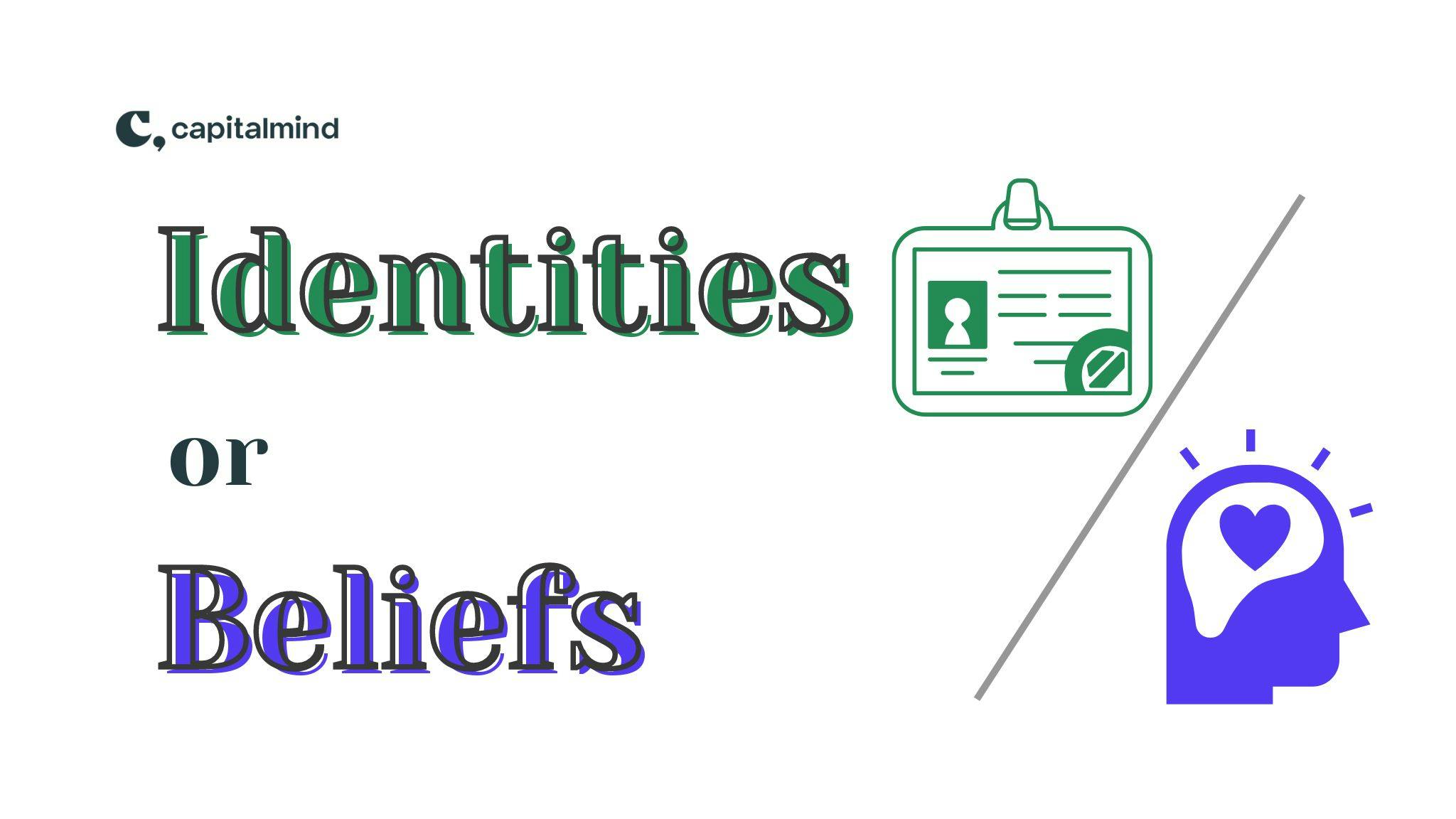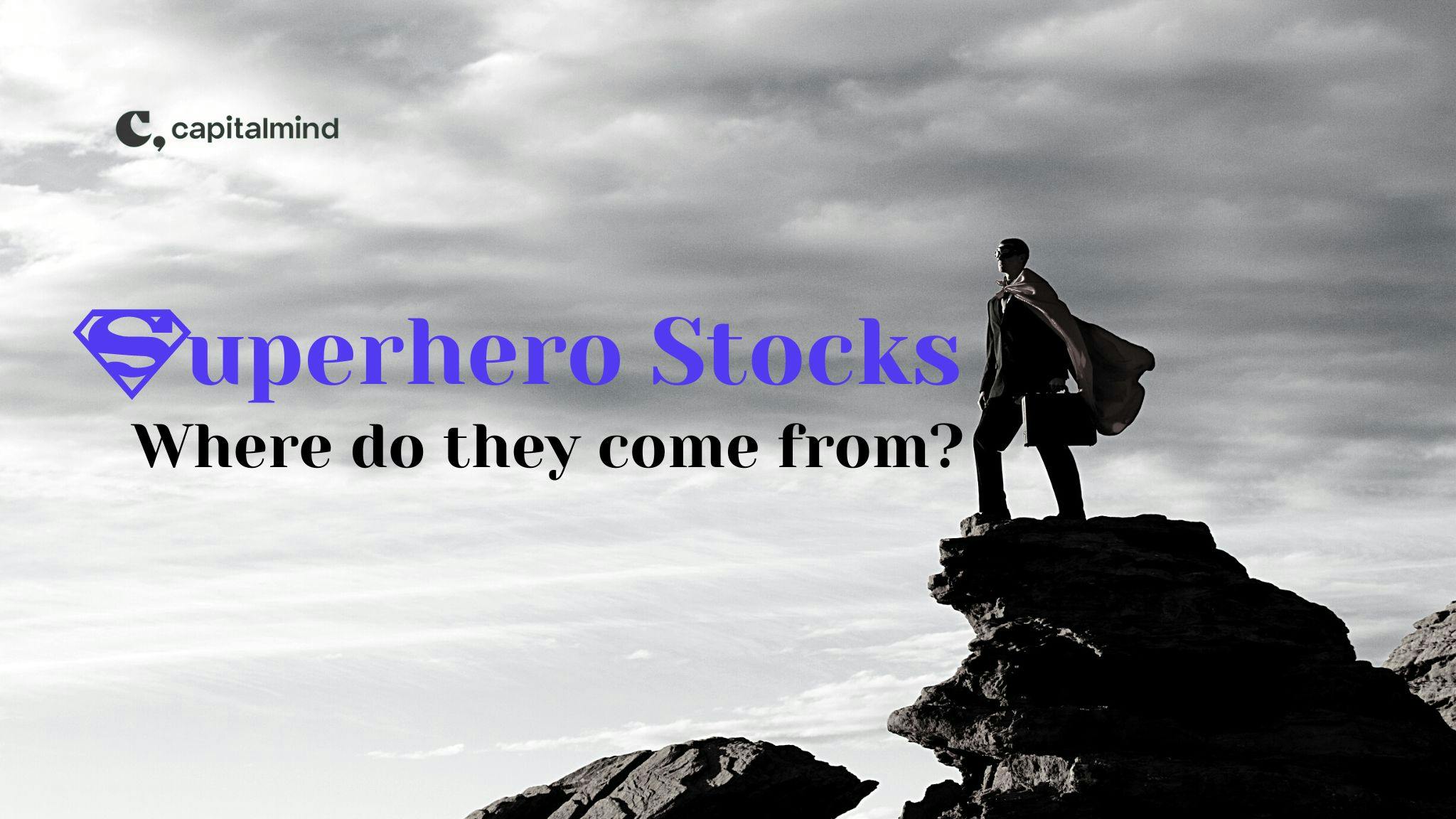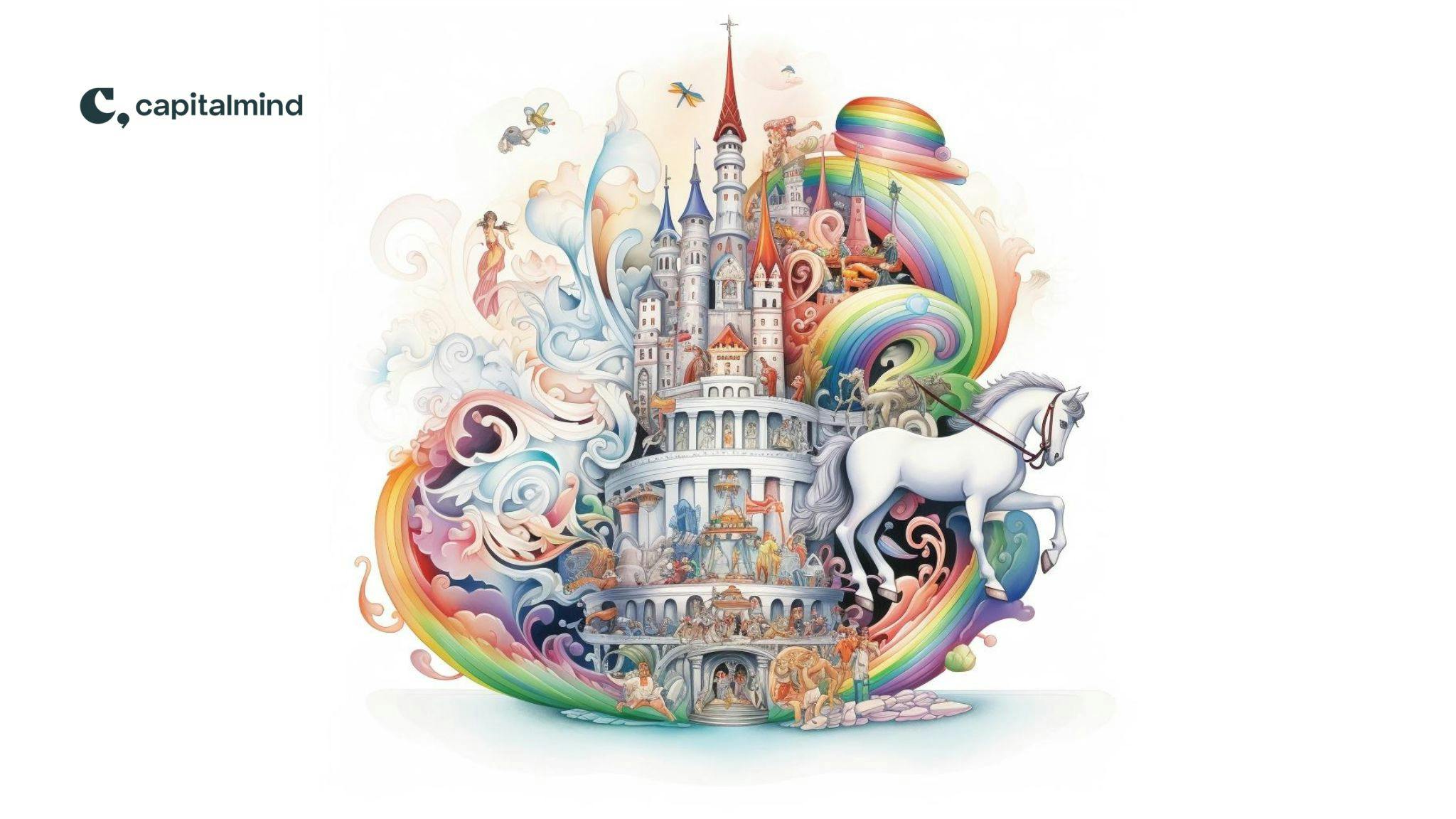(category)Foundations
Identities or BeliefsIdentities or Beliefs
From sports teams we enthusiastically support, to the kind of consumers we are, our religion, and our political affiliation, we all carry around multiple identities. Things we feel deeply about, and form a part of us. But this can be a problem when it comes to investing. As investors, we should stay away from identities and instead examine our core investing beliefs. Also here's one of our core beliefs.
Anoop Vijaykumar•

But this can be a problem when it comes to investing. Here's why, as investors, we should stay away from identities and instead examine our core investing beliefs.
"We ABSOLUTELY smashed them!" announced a friend. Apparently, the smashing he was referring to happened 7,200 km away in the heart of London, where Arsenal beat Manchester United 3-2. Not usually given to hyperbole, here he was, describing a one-goal margin as a "smashing" and using the first-person plural "we" in the process.
If it were not accepted reality, the idea of well-adjusted adults feeling extreme happiness or sadness based on the outcomes of sporting contests would sound ridiculous.
We'll all agree being an XYZ sports fan is more than a preference; it's a part of our identity, not easily changed.
The thing about identities is if you are one of that thing, you're definitely not another of the same thing. Let me explain.
There are Lewis Hamilton fans who wouldn't mind if Verstappen's pit crew fumbled with the fuel hose. Federer fans used to scan grand slam tournament draws for prospective Rafa opponents. During my time in a midwestern city in the US, the tone of Monday morning meetings relied quite a bit on the outcome of the local team's Sunday Night (American) Football game, more so if they had played "the old enemy", the neighbouring state.
Sports is the most evident, but not the only area where we take on identities. Identities apply to decisions about what we will or won't be seen buying.
The Toyota Prius, the first hybrid mass-production car, has sold over 15 Million units. It continued to dominate the market share for "green" vehicles long after rivals had launched equivalent models. One cited reason for the continued success of the Prius is its unmistakably unique (many call it ugly) design which gave its owners "the ability to signal environmental bonafides". Owning rival hybrid models did not offer the same cred since they could easily be mistaken for regular gasoline cars.
Religion and Political affiliation are well-accepted and core forms of identity. More often than not, they are fixed for a lifetime after we initially take them on.
We all have multiple identities.
The three hallmarks of something being a part of our identity:
-
- We identify as "in" a specific group and "out" of others
- We care enough to communicate our chosen identity to others like we have a badge on
- We're not totally objective about things related to it, and we're ok with that
The same thing happens with investing, which probably hurts investment outcomes.
Identities in Investing
Talk to most investors; they identify themselves as a specific kind of investor. That they only buy Quality businesses. Or only companies in the disruptive innovation business. Or that they are natural-born contrarians. Or that they will only hold concentrated portfolios because they bought Bajaj Finance in 2008.
Hang on a minute; what's wrong with staying in your circle of competence? Absolutely nothing.
Knowing the limits of your investing capabilities, whether in terms of the nature of your expertise or the time you're willing to devote, is vital.
The problem is with making your investing style a part of your identity. The thing you feel the need to display as a badge, the thing you feel the need to include yourself in, and what you're not the most objective about.
It shows itself in the urge to strongly defend a company when the stock corrects after not-so-great results.
Think about it. If the blip is only temporary and the market is overreacting, it's a time to happily add to your allocation. If the decline in business results is a sign of things to come, then it's time to reevaluate the investment. In neither scenario, does the objective investor feel the need to rush to the company's defence. But we see it all the time. And not just from fund managers trying to talk up their holding. It's almost as if an investment thesis coming under threat is a personal insult to my intelligence. Inconceivable!
A quick test for whether an investing style is part of someone's identity is how quickly they reject contrary points of view and how critical they are of other investing styles.
Investing is a lifelong pursuit. So letting as few things as possible into your investing identity is probably the smart thing.
Instead, pay attention to your Beliefs
Every decision to allocate to a particular asset class, switch from equities to debt, or real estate comes from our belief about what will work. Whether explicit or implicit, we all hold beliefs about investing. Whether we consciously examine them is another matter.
We did that examination a while ago and arrived at three Investing Beliefs we consciously hold. This is not to say these are the only correct set of beliefs, but that they are ours.
Here's one.
Belief: What is the value of company <ABC>? It depends
Buy stocks of companies when the market undervalues them. Hold them until the market overvalues them. Rinse. Repeat. Enjoy.
Every active investor would beat the market if this simple principle were easy. Even though given most companies, the core concept of arriving at a fair value is straightforward. On paper.
The context in which a company operates
- Markets: The things happening globally that no company has control over. When interest rates are low, companies find it easier to raise capital as investors seek out riskier avenues of return. The level of regulation impacts how easy or not life is for incumbents.
- Competition: Open a delivery restaurant, and you're competing against hundreds of others. Start an online food delivery platform, and you're competing against two players. Yet, they're both difficult spaces to be successful in—the platform, more so because of the need for access to large capital reserves. Conversely, staying successful is harder for a successful restaurant since new competition will keep popping up. In contrast, the odds of a new player emerging in the delivery platform space are low.
The company itself
- Quality of management: Kodaks's management de-emphasised the threat of digital cameras. Blackberry believed touchscreens would not be popular with business users. Blockbuster set up a streaming business but did not commit to it. On the other hand, Amazon went from online book retailer to seller of everything to cloud infrastructure. It's not hard to see why quality of management thinking and, more importantly, execution matters for an enduring business.
- Tangible and Intangible assets: Exxon has long-term access to oil fields. Coca-Cola has the Coke trademark and decades of marketing muscle. Google has the source code for its search engine. Enduring companies build assets that are hard to replicate.
- All of the above translate into financial performance, i.e. how much cash it generates by deploying available assets. Projecting what those future cash flows will likely be and discounting them all back to the present gives us the company's value today.
To accurately value a company, we need to be broadly correct on all of these elements, not just for today but for the future.
How predictable are those cash flows? For how long?
Depends on how insulated the company is from competition and markets.
This brings us to the nebulous concept called moats:
A moat is simply what the company has that is a crucial ingredient to its financial performance, which its competition does not have and can't get. The examples of assets above qualify, in a way.
Most companies struggle to establish any moat, meaning they are price-takers that sell what they can because otherwise, customers will go elsewhere. Those who manage to build a moat overestimate the level of protection it offers.
Famous examples of breached moats include Blackberry's secure and reliable messaging technology. Sears' network of locations and wide product assortment. Kodak's brand and patents in film photography.
When looking at a dominant company today, we should wonder whether that advantage they are known for is truly insurmountable.
If it's hard to accurately assess the longevity of a moat, can the projection of cashflows dependent on the same moat be certain?
The Hubble Telescope Problem
You don't even need to get it all that wrong to be way off on the "fair value" of a company.
Imagine a company as a black box that spits out a certain amount of cash every year. Let's assume it generated ₹100 Cr last year. Let's also assume it will be operational into eternity, meaning well past our investing lifetime. So we're parking the risk of it being a Kodak, Blackberry or Sears.
The assumption of what rate it will grow that cash flow makes all the difference.
In the growing perpetuity in our example, the difference between a 10 to 9% growth rate is a 50% reduction in value, i.e. the price multiple you would be ok to pay.
This is a simplification to make its point.
It is possible to convince yourself of any share price for a company with a few minor tweaks to assumptions about the future.
*Cough* Ark Innovation *Cough*
You wouldn't assume forever as your timeframe when valuing a company. Most analysts apply an ominously-named "multi-stage DCF model", which takes a certain growth rate for the "foreseeable" future, and then reduces that growth rate in orderly stages. Something like 20% for five years, 10% for the next 5, 5% for another three, maybe and no growth after that.
As an aside, a thumb rule to keep in mind: the level of complexity of a valuation model is inversely proportional to its usefulness as an investment decision-making tool.
Where do supernormal returns come from
We analysed stocks in India over ten years, from 2012 to 2022. We specifically looked for companies that went up 10x or more by Market Cap to answer the question Where do superhero stocks come from? Some of the companies in this sample even went by 50x or more. This means the market undervalued these companies by a massive degree.
What we found
The 10x stocks started at roughly the same earnings multiple as the rest of the market. They were, in fact, marginally cheaper. Over ten years, their multiples grew by three times, from 15x to 49x, while the rest of the market went from 15x to 19x.
Put another way, 24% of the market cap increase of 10x stocks came from earnings growth. The remaining 76% of that 10x or more rise came from multiple expansion, i.e., the market's expectation about the future.
What if the multiples had grown to 30x instead of 49x? Would they be cheap? Or would they be expensive at 60x?
And hence, our first belief is you can't arrive at a point estimate for the value of a company except in the broadest ranges.
And even then, we fully expect to be wrong a lot.
So, to the question "What is the value of company <ABC>?", the most appropriate response is "It depends."
Three takeaways
-
- Forming Identities in investing can be a handicap since they make us less objective and close us off to alternate points of view.
- Beliefs, on the other hand, are rules of thumb. Since internal, they can evolve as we learn. Therefore Examined Beliefs > Unquestioned Identities
- And one of our core beliefs is: When valuing companies, directional ranges based on common sense > Precise estimates because of the number of uncertainties involved. Market perception can override any model, no matter how carefully constructed. So expect to be wrong a lot.
In subsequent posts, we'll get into some of the other beliefs that form a core part of our investment philosophy.
Do you subscribe to an investing Identity or hold beliefs? What are they?
Read the next part of this mini-series on investing beliefs: The stock does not know you own it
You might like:
Where do superhero stocks come from? - Capitalmind
Keep your investing identity small - Capitalmind
Keep your identity small - Paul Graham
Conspicuous consumption: The Prius Halo and willingness to pay for environmental bonafide- Journal of environmental economics and management
Happiness lasts longer after seeing a sports team win than partner saying "I love you" - Express
What Cathie Wood gets right - Capitalmind
This post is for informational purposes only and should not be considered investment advice.
We are on Twitter @CalmInvestor and @Capitalmind_in.
Related Posts
Make your money work as hard as you do.
Talk to a Capitalmind Client AdvisorInvesting is not one size fits all
Learn more about our distinct investment strategies and how they fit into your portfolio.
Learn more about our portfoliosUnlock your wealth potential
Start your journey today













